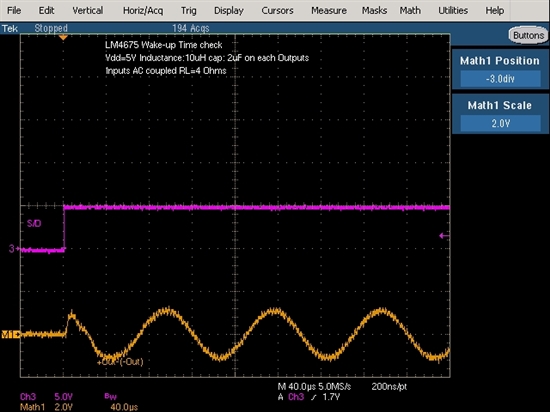Hi,
We have obtained sevral questions from our customers.
When we supply the power supply voltage to LM4675, we found the start-up operation as the attached file of "LM4675_Rush_Current.png".
We seems that inrush current is very large.
How do you think about this?
Moreover, why is it needed 7s as stability time?
Could you please tell us about them?
Best Regards,
Kato





